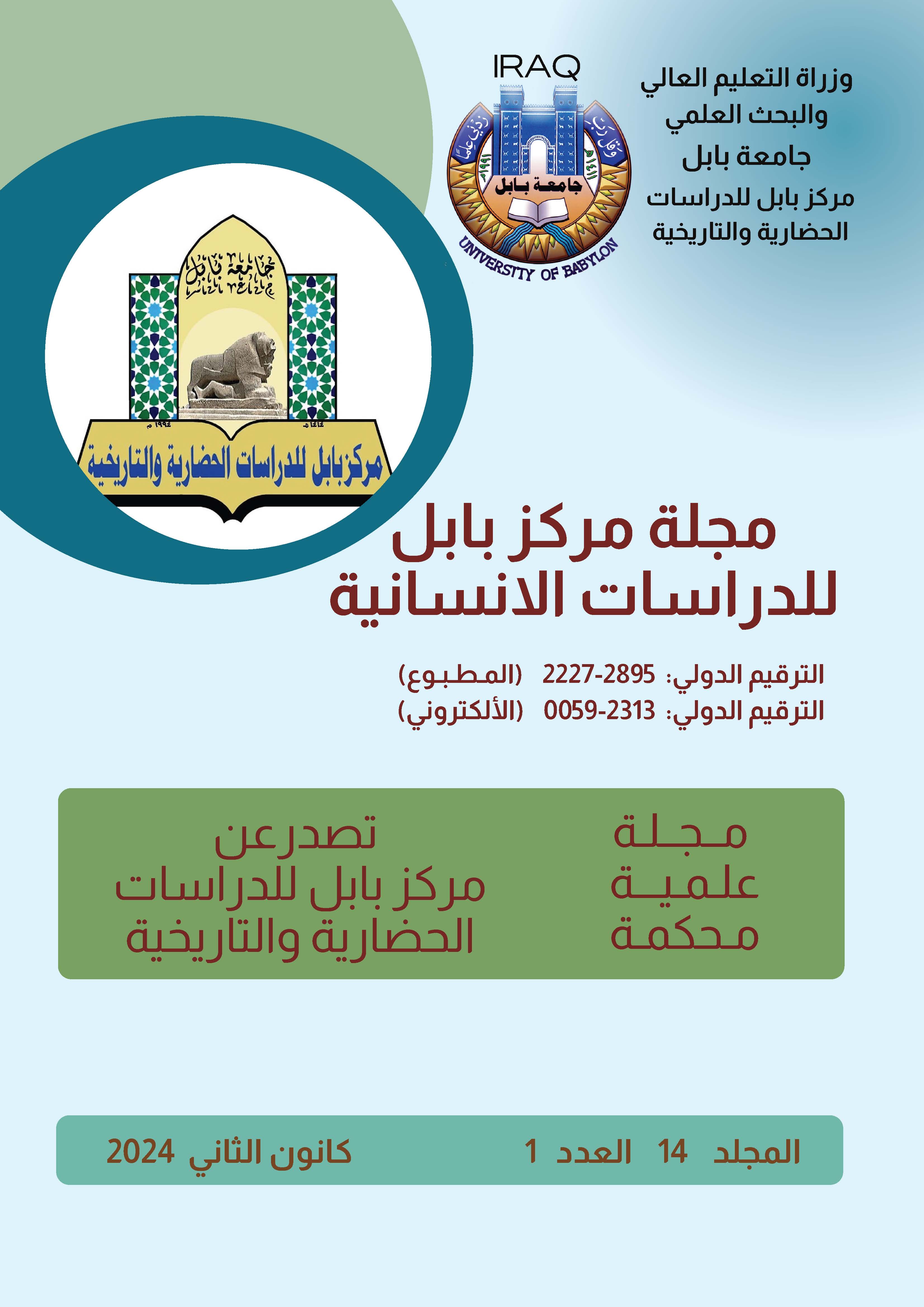Deletion of sentences according to Ibn al-Atheer (d. 637 AH) in the common proverb in the literature of the writer and poet A semantic grammatical study
Keywords:
deletion of sentences - Ibn Al-Atheer - Alsair The proverb - grammatical structure - semantic effectAbstract
The phenomenon of deletion is a feature of our Arabic language, as it tends towards brevity, which gives the phrase strength and richness in meaning, but rather makes it far from being heavy. By extrapolating literature books, we stopped at the book (The Walking Proverb) by Ibn al-Atheer, who died (637 AH); As it presented various sciences, including those related to grammar, and because we wanted to deal with issues that contradict the origin of the grammatical structure based on the process of attribution, we chose to deal with deleting sentences. Due to for being less studied, and after After extrapolation, we found Placements suitable for study. Ibn al-Atheer mentioned them in the omission of the vocabulary, citing - mostly - Qur’anic evidence. The task of the research lies in studying the deletion of the compound according to what our author dealt with in a grammatical study, with an indication of the semantic effect of this deletion, and then standing on the opinions of the commentators; Based on their statements and examining what was presented in this work, Because it is one of the works of literature, with a preface to every type of deletion with what the grammarians said.
And because the deletion occurs in the compound methods of two sentences - in most cases - the study necessitated dividing it into three investigations. We devoted the first to deleting the sentence in the conditional style; It was widely, It included two requirements, one of which was: deleting the conditional sentence, whether it was deleted with the tool and some of the answer, or whether it، Or was it deleted, with the tool and the object remaining indicative of it، As well as deleting it with the tool (if) and the tool were deleted with a substitute for it. As for the second requirement, it concerned deleting the conditional response sentence after the non-assertive conditional articles - which is the predominant one - and included (if), (either), (when), (if), and if not), and after the assertive conditional article represented by (that). and we made the second topic to delete the sentence in the oath and command styles, and we marked the third topic with (deleting the sentence in other contexts) referred to by Ibn Al-Atheer, and that included deletion with the survival of some elements of the sentence and deletion in view of the appropriateness of speech.







